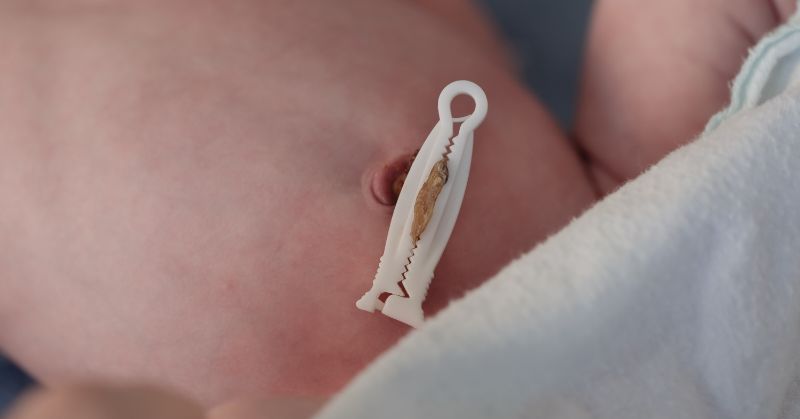Findings from NIH-funded study suggest that technique may enable faster response than standard procedure

WHAT:
A treatment to move blood from the umbilical cord into an infant’s body may provide a safe option for preterm infants born after 28 weeks who need rapid support, suggests a study supported by the National Institutes of Health. The procedure, called umbilical cord milking, involves gently squeezing the cord between the thumb and forefinger and pushing the blood into the newborn’s abdomen. The new findings suggest that concerns raised by a 2019 study of infants born before 28 weeks—which concluded that umbilical cord milking might increase the risk of bleeding inside the brain—do not apply to preterm infants born after 28 weeks. The current study appears in Pediatrics.
The standard procedure, delaying cord clamping while blood naturally flows into the infant’s body, takes 30 to 180 seconds. However, cord milking, takes about 20 seconds, reducing delay for infants who need immediate assistance, such as respiratory support. Both procedures allow for umbilical cord blood to reach the infant’s body before clamping, reducing the risk of anemia and other complications seen among infants receiving immediate cord clamping and cutting.
The study was conducted by Anup Katheria, M.D., of the Sharp Mary Birch Hospital for Women & Newborns in San Diego, and colleagues in the United States, Canada and Europe. It was supported by NIH’s Eunice Kennedy Shriver National Institute of Child Health and Human Development.
More than 1,000 infants were randomly assigned either to umbilical cord milking or delayed cord clamping. Rates of severe intraventricular hemorrhage (bleeding inside the brain) and/or death did not differ significantly between the two groups (just over 1%). Moreover, the rates of overall intraventricular hemorrhage were also similar between the groups (approximately 12%). The researchers will follow all the infants in the study for two years to observe longer term outcomes.
WHO:
Nahida Chakhtoura, M.D., chief of the NICHD Pregnancy and Perinatology Branch, is available for comment.
ARTICLE:
Katheria, A. Umbilical Cord Milking versus Delayed Cord Clamping in Infants 28-32 weeks: A Randomized Trial. Pediatrics.2023.
###
About the Eunice Kennedy Shriver National Institute of Child Health and Human Development (NICHD): NICHD leads research and training to understand human development, improve reproductive health, enhance the lives of children and adolescents, and optimize abilities for all. For more information, visit https://www.nichd.nih.gov.
About the National Institutes of Health (NIH): NIH, the nation's medical research agency, includes 27 Institutes and Centers and is a component of the U.S. Department of Health and Human Services. NIH is the primary federal agency conducting and supporting basic, clinical, and translational medical research, and is investigating the causes, treatments, and cures for both common and rare diseases. For more information about NIH and its programs, visit https://www.nih.gov.

 BACK TO TOP
BACK TO TOP